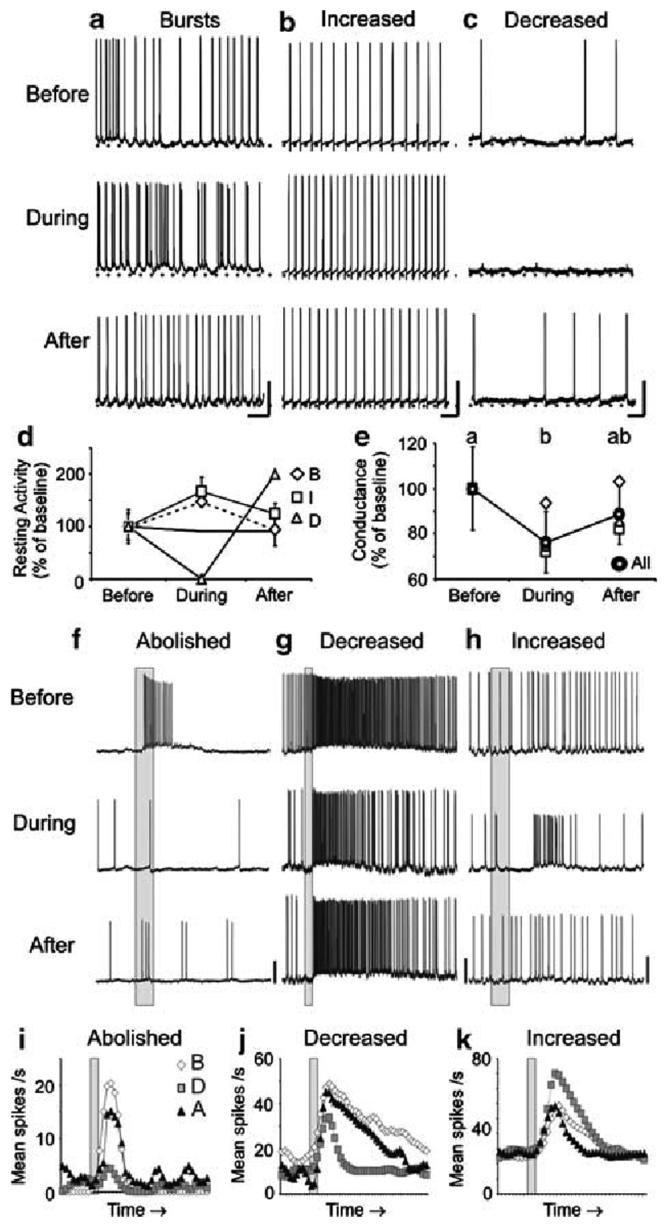Fig. 5.

Inhibitors of sGC signaling caused similar modifications in the resting and odor-evoked activity as NO synthesis inhibitors in a subset of LNs. a-c Representative traces are shown for three LNs before, during, and after treatment with 500 μM ODQ. As found with NOS inhibition, sGC inhibition resulted in: arrhythmic bursting (a n = 1; LN28 shown), increased firing rates (b n = 2; LN29), and decreased firing rates (c n = 1; LN31), coupled with changes in the RMP and action potential amplitude in the bursting LN (a). e The average conductance of all LNs decreased significantly during sGC inhibition (n = 4; repeated measures ANOVA df = 2; F = 16.5; P < 0.001; Tukey's post-hoc test: P < 0.001). f-k LN odor responses during sGC inhibition were also abolished (f, i LN30; n = 1; significance not measured, n < 4), decreased (g, j; LN28; n = 1), and increased (h, k; LN32; n = 2). Calibration a-c 20 mV and 250 ms; f-k 20 mV and 200 ms (gray bar)
